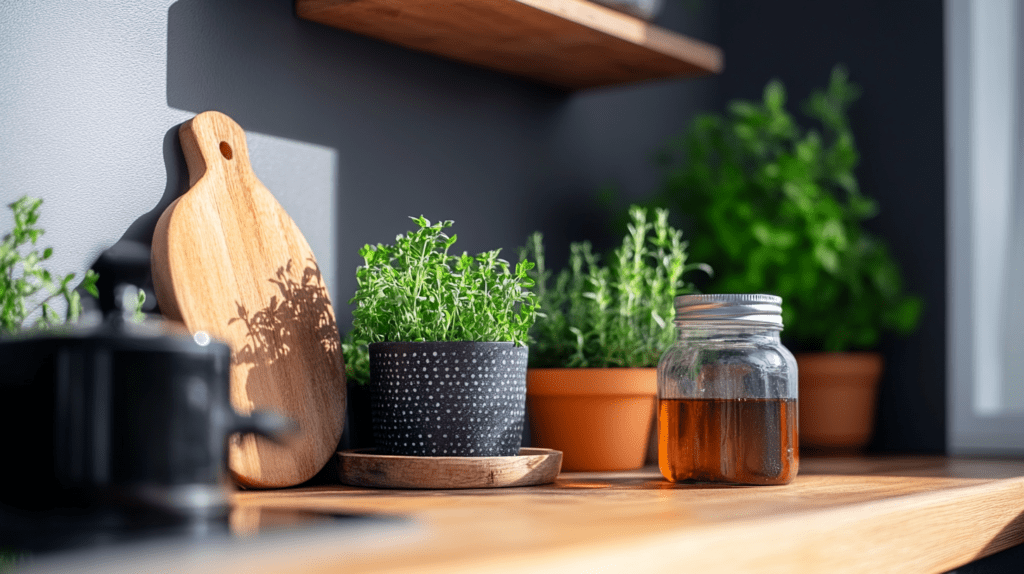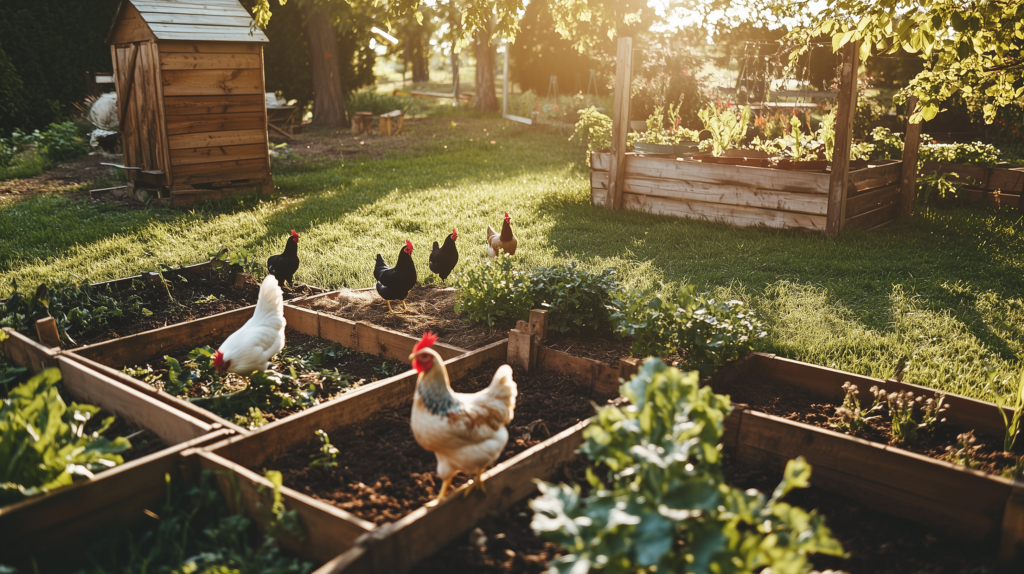This post may contain affiliate links, including those from Amazon Associates. If you make a purchase through these links, I may earn a commission at no additional cost to you. Learn more about our affiliate policy.
Spring is a magical season, bringing renewal and the perfect chance to breathe fresh life into your apartment homestead.
Even in my tiny apartment, I’ve found ways to bring that vibrant, earthy energy indoors, and trust me, you don’t need a sprawling backyard to make it happen.
I know how it feels to crave a connection to nature, to want to live more intentionally, but to stare at your limited square footage and think, Where do I even begin? I’ve been there, overwhelmed and unsure, but over time, I’ve discovered that small spaces can hold big possibilities.

This guide is for you, someone who’s ready to dip a toe into homesteading, even if you’re working with a balcony, a windowsill, or a corner of your kitchen.
These 12 beginner-friendly activities will help you kickstart your apartment homestead this spring, from growing fresh herbs to crafting non-toxic cleaners. No perfection required, just a little curiosity and a willingness to try.
1. Start an Indoor Vertical Herb Garden

Let’s be honest, there’s something magical about snipping fresh basil right from your own little garden. When I first tried growing herbs in my apartment, I was amazed at how simple it could be.
All you need is some wall space and one of these 7 ideas for vertical herb garden walls, think a thrifted wooden shelf or a stack of mason jars, and a sunny spot by the window. Basil, mint, and parsley are forgiving for beginners, and they’ll fill your space with that earthy scent we all crave. Water them sparingly, let the light work its magic, and soon you’ll be tossing homegrown herbs into every meal.
2. Preserve Food Without Canning
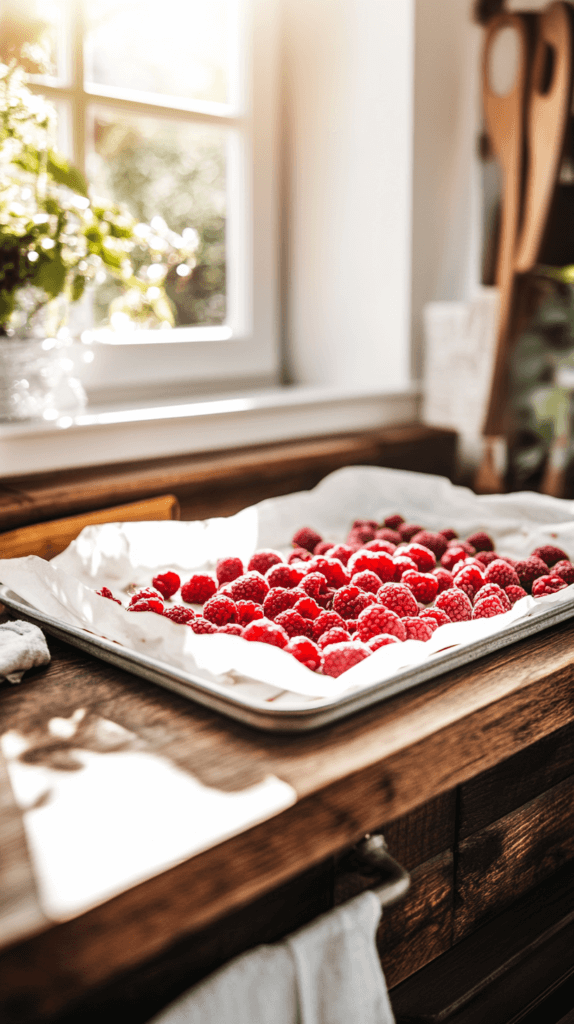
Canning? It intimidated me from the start, too many jars, too much pressure (literally). But preserving spring’s bounty doesn’t have to be complicated. I’ve found plenty of ways to preserve food without canning, freezing berries and drying herbs being my go-to methods.
Line a tray with parchment paper, spread out some fresh berries, and freeze them before putting in storage bags in the freezer. Instant smoothie goodness all summer long!
It’s like capturing spring’s energy to enjoy later, no fancy equipment needed.
3. Craft Homemade Herbal Vinegars

Infusing vinegar with herbs feels like a quiet act of alchemy. I stumbled into this when I had extra rosemary from my little garden, now it’s a staple.
Grab a glass jar, toss in fresh herbs like thyme or lavender, and cover them with white vinegar.
Let it sit for two weeks, shaking it gently now and then.
The result will be a tangy, aromatic liquid that’s perfect for dressings or even as a natural cleaner. It sits on my counter in a pretty bottle, a reminder that simple ingredients can become something extraordinary.
4. Urban Foraging for Wild Edibles
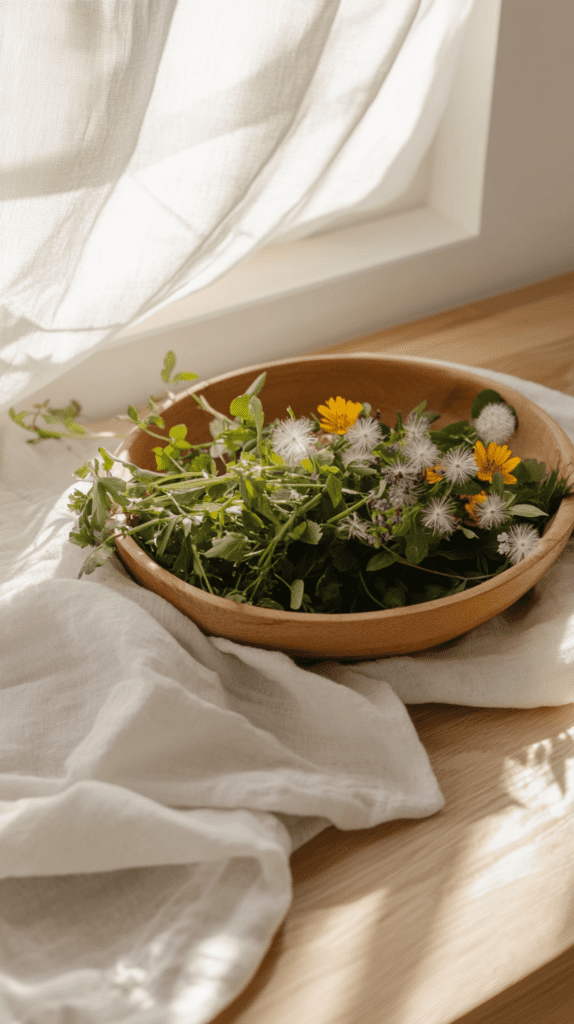
Last spring, I spotted dandelions sprouting in a park near my building and thought, Could I actually eat those?
Turns out, yes, and they’re packed with nutrients. Urban foraging is easier than you’d expect. S
tart with something recognizable like dandelion greens (wash them well!), and research safe spots away from traffic or pesticides.
It’s a free, empowering way to connect with nature, even in the city. My first dandelion salad felt like a secret victory, proof you can find abundance anywhere.
5. Ferment Kombucha and Teas

When I first started apartment homesteading, fermenting kombucha felt intimidating until I discovered how truly simple and rewarding it is.
Kombucha is a lightly fizzy, probiotic-rich tea that’s fantastic for gut health, energy, and digestion.
To brew it at home:
- Start by steeping black or green tea in hot water, adding organic sugar, then letting it cool completely.
- Once cooled, pour it into a glass jar, add a SCOBY (the culture responsible for fermentation), and some starter kombucha.
- Cover your jar with breathable cloth secured by a rubber band.
- Let it ferment undisturbed in a warm spot (around 70°F) for 7–10 days.
If kombucha feels daunting, fermented herbal teas are an easier alternative. Simply brew your favorite herbal tea (chamomile, hibiscus, or mint work wonderfully) add a tablespoon of raw honey or store-bought kombucha as your fermentation starter, and allow it to ferment for about 3–5 days.
Both methods deliver delicious, probiotic-rich beverages right from your kitchen counter, promoting holistic wellness and adding a refreshing ritual to your daily routine.
6. Make DIY Non-Toxic Cleaning Products
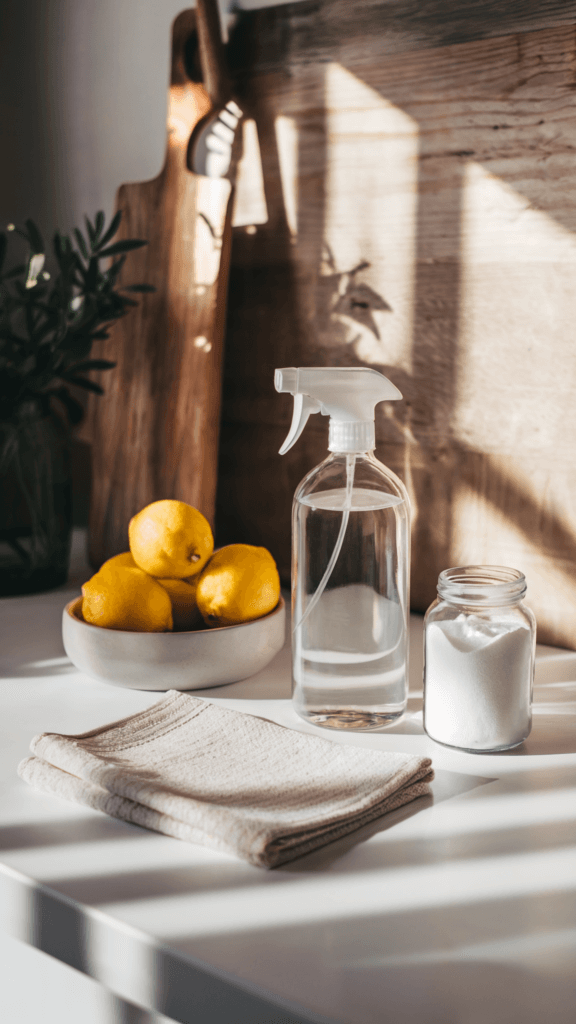
I used to dread cleaning, those harsh chemical smells just didn’t sit right. Then I learned how to DIY my own non-toxic cleaning products, and everything changed.
It’s so easy, and my apartment smells like a spring meadow instead of a factory. Mix up a little white vinegar, water and essential oil, spritz it on counters, and wipe away. It’s minimal, non-toxic, and feels like a small rebellion against store-bought junk. You’ll wonder why you didn’t start sooner.
7. Start a Vegetable Container Garden

Growing veggies in an apartment? Yes, it’s possible, and so rewarding.
My first try was cherry tomatoes in a pot on my windowsill, and watching those little red gems ripen felt like a quiet triumph. Pick compact varieties like radishes or lettuce, grab a decent pot with good soil, and set it where the sun lingers.
Water consistently, and soon you’ll have fresh produce steps from your couch. It’s proof that even small spaces can nurture life.
Learn how to start a renter-friendly container garden here.
8. Start a Pollinator Wildflower Garden on a Balcony
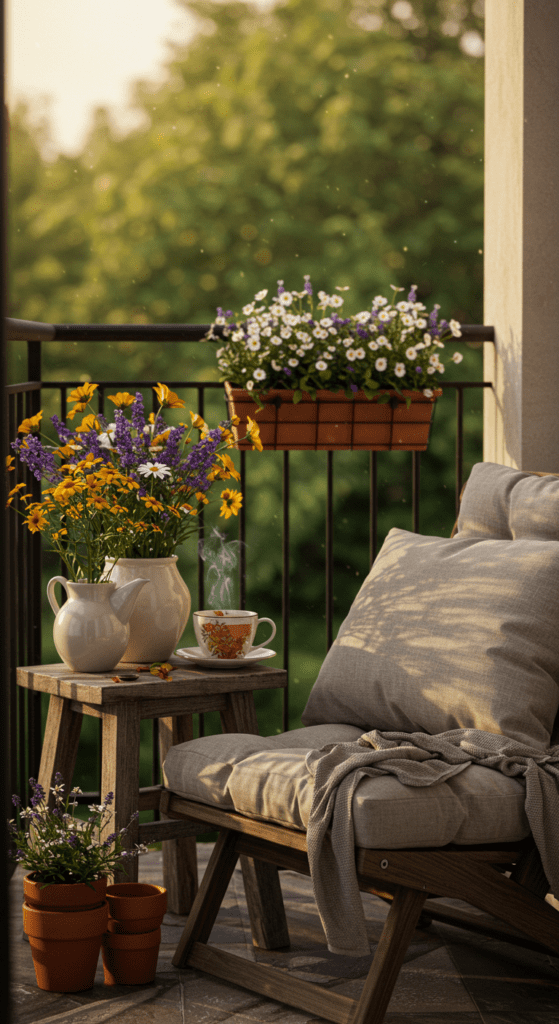
One spring, I decided to start a wildflower garden on my balcony. I scattered wildflower seeds, zinnias and cosmos, in a shallow container on my balcony, and suddenly, bees started showing up.
It’s like I’d invited nature over for tea. This is so easy: grab a pot, sprinkle seeds, and let them grow wild. They don’t need much fuss, and they’ll turn your balcony into a buzzing, blooming haven.
Supporting pollinators feels good, and the earthy colors fit that clean, natural vibe we love.
9. Set Up a Vermicomposting System
Okay, I’ll admit it, worms freaked me out at first. But setting up a vermicomposting bin under my sink? Total game-changer.
Red wigglers are low-maintenance buddies who turn my veggie scraps into rich compost for my plants. Get a small bin, add shredded newspaper for bedding, and toss in peels or coffee grounds (not too much!).
Stir it weekly, keep it balanced, and you’ll have “black gold” in no time to add to your veggies and houseplants.
10. Grow Sprouts Indoors
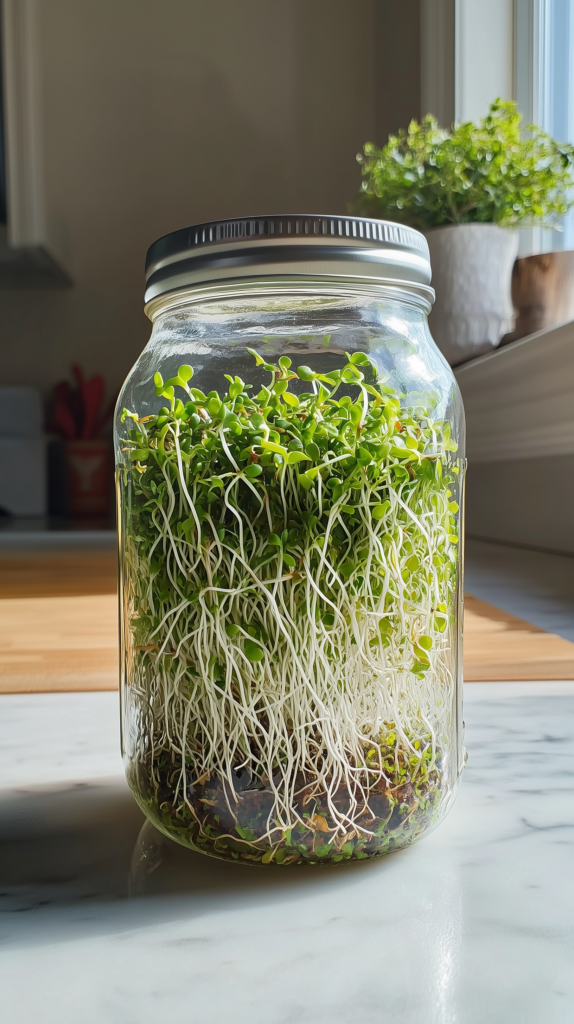
Sprouts were my gateway to growing food, fast, fresh, and foolproof.
I started with alfalfa in a jar, and in just days, I had crunchy greens for salads. Soak seeds overnight, rinse twice daily, and cover the jar with cheesecloth. Set it by a window (no direct sun), and watch them sprout like magic. It’s the easiest way to feel like a homesteader in the city, and that burst of vitality on your plate? Priceless.
11. Switch to Natural Beeswax Wraps
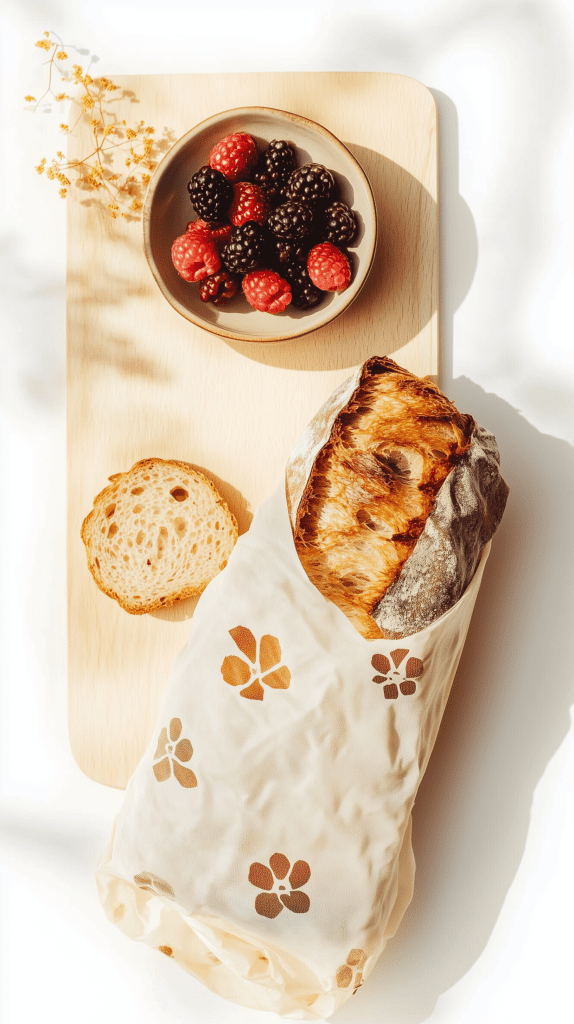
Plastic cling wrap never felt right, so I started using Bee’s Wraps Reusable Food Storage Wraps, and wow, what a difference. They are reusable, natural wraps that keep food fresh and my kitchen more non-toxic.
I snagged a few different styles to give my fridge a stylish touch, and now my kitchen feels a little more sovereign. It’s a small shift that aligns with a non-toxic, intentional life.
12. Build a DIY Self-Watering Planter
Busy days used to mean wilted plants, until I made a self-watering planter from a plastic bottle.
- Cut a plastic bottle or glass jar in half.
- Thread twine or fabric through the cap to act as a wick.
- Fill the bottom half with water.
- Add soil and a small plant (like mint or basil) to the top half.
- Place the top section inside the water-filled base, wick-down, so it absorbs moisture as needed.
I set one up for my mint, and it’s thriving with almost no effort. It’s a simple, hands-off way to keep plants hydrated, even during busy weeks.
Conclusion
These 12 activities show how spring can bloom right in your apartment, whether it’s worms turning scraps into compost or a self-watering planter keeping your herbs alive.
I’ve stumbled through plenty of these myself, but each one brought me closer to a life that feels vibrant and aligned. You don’t need a big space or expert skills, just a spark of curiosity.
Start small, maybe with sprouts or a wildflower pot, and let it grow from there. You’re not just tending plants or crafting cleaners; you’re reclaiming a piece of your sovereignty, one intentional step at a time.

